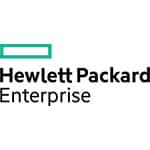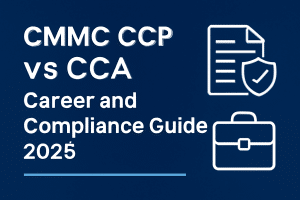The PL-300 exam is designed to test your practical knowledge of Power BI and its ability to help businesses analyze and visualize data. As with any exam, understanding the type of questions you’ll face is key to your preparation. In this blog, we’ll break down the PL-300 exam questions, explain what to expect, and offer tips on how to prepare effectively to answer them confidently.
TLDR (Too Long; Didn’t Read)
The PL-300 exam includes various question types, such as multiple-choice and case studies. This blog covers the types of questions you’ll encounter, tips on how to approach them, and resources to help you prepare. Understanding these questions will help you approach the exam with confidence. For more detailed information on the PL-300 exam, check out our comprehensive PL 300 guide here.

Types of PL-300 Exam Questions
The PL-300 exam is a hands-on, practical test of your Power BI skills. The questions are designed to assess your ability to perform real-world tasks using Power BI, from importing and cleaning data to building reports and dashboards. There are two main types of questions you’ll encounter on the exam:
1. Multiple-Choice Questions
Multiple-choice questions are the most common type of question in the PL-300 exam. They test your theoretical knowledge and understanding of key Power BI concepts and features.
Examples of Multiple-Choice Questions:
- What type of data source can you connect to in Power BI?
- Which of the following DAX functions would you use to calculate the sum of a column?
- How do you import data from Excel into Power BI?
These questions are designed to test your foundational knowledge of Power BI and how well you understand its capabilities.
Tip: To prepare for multiple-choice questions, make sure you understand the core functionalities of Power BI. Review the official Microsoft Learn resources and focus on how different features (like data modeling, DAX, and visualizations) are applied in real-world scenarios.
2. Case Study-Based Questions
Case study-based questions are scenario-based questions that simulate real-world data problems. These questions are designed to assess your practical ability to solve complex data challenges using Power BI.
Examples of Case Study-Based Questions:
- You are given a dataset with sales data. How would you create a report that highlights trends in sales performance over the past year?
- You’re tasked with building a dashboard for a business. What visualizations would you use to represent customer demographics and sales growth?
These questions require you to apply your knowledge of Power BI to analyze data and create reports and dashboards that communicate meaningful insights.
Tip: To prepare for case study-based questions, practice working with sample datasets. Create real-world reports, use DAX for calculations, and practice building interactive dashboards. The more hands-on practice you get, the easier these questions will be.
Key Areas Tested in PL-300 Exam Questions
The PL-300 exam questions focus on four main areas: data preparation, data modeling, visualization and analysis, and deploying and maintaining reports. Here’s how the questions are distributed across each area:
1. Data Preparation (15-20%)
This section assesses your ability to import, clean, and transform data. You’ll be expected to handle various data types, deal with missing values, and ensure that the data is ready for analysis.
Example Question:
You are tasked with importing a CSV file containing sales data. Which steps would you take to clean and transform the data before importing it into Power BI?
2. Data Modeling (30-35%)
This section tests your ability to create data models, define relationships between tables, and write DAX expressions for calculations.
Example Question:
You need to create a relationship between two tables—one containing customer details and the other containing sales transactions. Which type of relationship should you define in Power BI?
3. Visualizing and Analyzing Data (25-30%)
This area tests your ability to create effective visualizations and interpret data. Expect questions about creating reports, building dashboards, and using advanced visualization techniques.
Example Question:
Which visualization would you use to compare sales performance across multiple regions over the past year?
4. Deploying and Maintaining Reports (20-25%)
This section evaluates your ability to deploy and maintain reports and dashboards. You’ll be tested on how to share reports, manage permissions, and update datasets.
Example Question:
You’ve built a report and need to share it with your team. What steps should you take to ensure the report is accessible and up-to-date?
How to Approach PL-300 Exam Questions
1. Read Each Question Carefully
Whether it’s a multiple-choice or case study question, make sure to read each question thoroughly before selecting an answer. Many questions contain subtle details that are critical for selecting the correct answer.
Tip: For case study-based questions, take your time to read the scenario and understand the data challenges presented before jumping to conclusions.
2. Eliminate Obvious Incorrect Answers
If you’re unsure about a multiple-choice question, try to eliminate obviously incorrect answers first. This will increase your chances of selecting the correct answer from the remaining options.
Tip: Often, Power BI questions test your knowledge of the tool’s capabilities, so even if you’re not 100% sure of the answer, eliminating irrelevant options can help narrow down your choices.
3. Use Your Time Wisely
The PL-300 exam is time-limited, so it’s important to manage your time wisely. If you get stuck on a question, move on to the next one and come back to it later if you have time.
Tip: Practice answering questions within the time limits to ensure you can complete the exam in the allotted time. Use practice exams to simulate exam conditions and improve your pacing.
4. Practice with Real Exam Questions
The best way to familiarize yourself with PL-300 exam questions is to practice with real exam questions. This will give you a sense of the question format and allow you to identify which areas you need to focus on.
Tip: Take practice exams regularly to track your progress and ensure you’re ready for the real test. Cert Empire offers PL-300 exam dumps and practice questions designed to mirror the actual exam.
Resources to Help You Prepare for PL-300 Exam Questions
To increase your chances of success, here are some resources you can use to prepare for PL-300 exam questions:
1. Microsoft Learn
Microsoft’s official learning platform provides free, structured training on all the topics covered in the PL-300 exam. It’s an excellent resource for reviewing key concepts, such as data transformation, DAX, and visualization best practices.
2. Practice Exams
Taking PL-300 practice exams is one of the best ways to familiarize yourself with the question format and test your knowledge. Use realistic practice exams to identify areas where you need more practice and get used to the pacing of the exam.
3. Cert Empire’s Exam Dumps
Cert Empire offers PL-300 exam dumps that provide realistic questions to help you prepare. These dumps will give you an insight into the types of questions that appear in the actual exam.

Conclusion: Preparing for PL-300 Exam Questions
Understanding the types of questions you’ll face on the PL-300 exam is a crucial part of your preparation strategy. Whether you’re tackling multiple-choice questions or working through case study-based scenarios, being familiar with the content and format of the exam will boost your confidence and improve your chances of success.
To prepare effectively, focus on hands-on practice with Power BI, review the core exam areas, and practice answering realistic PL-300 exam questions. With the right preparation and resources, you’ll be ready to tackle the PL-300 exam and earn your Microsoft Certified Data Analyst Associate certification.
Read More:
Looking for more info? Here are some related posts to explore:
- How to Pass the PL-300 Exam – Discover strategies to answer those tricky PL-300 exam questions.
- PL-300 Certification: Is It Worth It? – Understand why the PL-300 certification is valuable for your career.


























